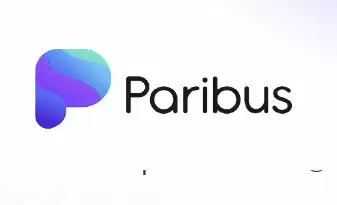The Paribus network is a blockchain—independent protocol running on the Cardano blockchain. Offering its NFT holders new revenue streams, the application contains a wide range of decentralized financing (DeFi) tools compatible between blockchains.

The Paribus protocol allows users to tokenize real assets on the network and use them as DeFi tools and assets throughout the industry in a wide variety of applications.
Moreover, as a protocol striving for decentralization, the platform is managed by its own community of Paribus token holders (PBX). Among other things, Paribus provides holders of PBX tokens with the opportunity to receive passive income using cryptocurrency.
In this article, we will dive into the ecosystem of the Paribus protocol, and study its main products and services. In addition, we will look at the roles of platform users and how the Paribus token (PBX) can provide platform management, as well as discuss various assets of non-interchangeable tokens (NFT) compatible with the protocols of the Paribus platform.
What is Paribus?
Working on Cardano
PBX Token
Users of the Paribus protocol
Features of the Paribus network
Synthesis of NFT
Use cases of Paribus
Results
What is Paribus?
Paribus, powered by the Cardano blockchain, is a decentralized application (DApp) facilitating an unauthorized and censorship-resistant NFT borrowing and lending protocol with the ability to interact between blockchains.
paribus
The mission of the project is to provide a comprehensive solution for collecting OTC assets in the form of NFT and converting them into financial instruments.
The slogan of Paribus sounds like: "Everything that can be tested can be sold." Thanks to the ultra-fast Cardano, Paribus offers investors new opportunities. Using an innovative approach to DeFi and NFT, Paribus allows users to tokenize any asset offline.
Users can then use these NFTs in the platform's borrowing and lending protocols, creating a new utility for underutilized assets.
Some of the DeFi assets currently hosted in the app include music, Ethereum Name Service (ENS) domain names, cryptographic collectibles, and insurance policies.
Adhering to the true nature of the DeFi ideals, the entire Paribus code is completely open, viewable and free for users. However, before that, the project will subject the code to thorough testing and audit.
Working on Cardano
The Cardano blockchain offers seamless compatibility with other blockchains. Thus, the Cardano blockchain allows the Paribus protocol to access and aggregate liquidity from various decentralized finance (DeFi) chains and assets.
This includes cryptocurrency assets such as Cardano (ADA), Polkadot (DOT) and Ethereum (ETH), as well as non-exchangeable token (NFT) assets such as digital art, virtual earth and synthetic assets.
Paribus is one of the first applications launched on Cardano, which gives it the advantages of a pioneer. For example, this is access to the ever-growing market of Cardano blockchain users. Since Cardano is only halfway to a five-stage launch, the blockchain project, in turn, expects huge growth.
A key factor in choosing the Cardano blockchain is the ability to deploy a network-independent decentralized finance protocol (DeFi) that is fully compatible with other protocols.
As a result, the Paribus network can offer its users the opportunity to create value from their off-network assets, which can move freely in the DeFi industry. For a blockchain project, Cardano seems to be the ideal choice for deploying a DeFi application compatible with numerous asset types from multiple chains.
PBX Token
The native Paribus token (PBX) is the key to protocol management, while the only requirement for token holders is to invest a certain amount of funds. Currently, the project team is still monitoring the protocol. However, according to the roadmap of the project, Paribus still plans to create the infrastructure of a decentralized autonomous organization (DAO) over the next five years.
pbx token
The main purpose of using the PBX token is to provide each holder with the opportunity to contribute. Holders of PBX tokens can act as investors, traders or participants in the borrowing and lending protocol.
Moreover, the protocol offers PBX token holders the opportunity to receive passive income. Using a multi-level system, they can place bets on their assets and receive a percentage of the fees accumulated by the protocol.
The rewards depend on their wagered amount: the more PBX tokens are delivered, the higher the percentage of rewards, respectively. In turn, this stimulates the blocking of tokens, increasing the deficit and, consequently, the value of the token.
Users of the Paribus protocol
Protocol users can play two key roles: borrowers or lenders. The platform's creditors are otherwise called "hodlers". They are crypto investors holding onto their assets and not planning to sell them.
Playing a crucial role in the Paribus network ecosystem, the protocol encourages lenders on the platform by offering them the opportunity to receive passive income from their assets. Users only need to place bets, and the protocol safely lends their assets, receiving a percentage of users for this.
In addition, the platform provides a calculation of the full cost of the loan so that lenders can estimate their income on various assets. In turn, the role of lenders can be compared to liquidity providers offering assets as liquid capital for issuing bank loans.
Borrowers, in turn, can only take fully secured loans, that is, contribute at least 100% of the cost of the funds they want to borrow. Indirectly, this means that borrowers are also liquidity providers.
Nevertheless, they play a key role in ensuring the smooth operation of protocol operations by paying a small one-time commission for obtaining a loan. In addition, borrowers are subject to payment of a small interest rate on the loan.
Features of the Paribus network
The Paribus protocol is committed to innovating in the growing movement of synthetic cryptocurrency assets in the decentralized finance (DeFi) industry. In short, synthetic assets allow holders to access the price of an underlying asset without owning or being responsible for that asset.
the paribus network
Seeing unprecedented growth in the industry in 2021, the Paribus network wants to allow users to use their synthetic assets. Along with providing a solution for the underutilized assets underlying the DeFi application, the platform offers users the opportunity to earn passive income with their synthetic assets and NFT through the Paribus decentralized lending market.
Currently, the platform's website presents 6 key functions for creating and using NFT and synthetic assets. Paribus expects that in the future, NFT trading platforms will become as liquid and accessible as the market of traditional cryptocurrency assets. The platform strives to be at the forefront of these innovations and developments, offering its users the following features:
Synthesis of NFT
The Paribus protocol allows users to use collateral loans based on non-interchangeable tokens (NFT). In other words, users can submit any NFT asset and lock it in the Paribus borrowing protocol in order to then borrow funds against the underlying NFT while the asset value is growing.
Another option for using non—interchangeable tokens (NFT) is to receive a reward for staking. Users can place their NFTs using Paribus in similar NFT pools (for example, NFT music pools, domain name pools, etc.), and receive passive income from their assets.
The project provides various options for a pool of bets for various tokens of liquidity providers (LP) from several blockchains. The chain-independent protocol offers a competitive means to host a number of cross-network assets.
Users of the Paribus network can use the positions of their liquidity provider (LP) by borrowing funds secured by their LP tokens. Paribus users can borrow against liquid positions of several popular automated market makers (AMM).
This project is one of the first active applications on the Cardano blockchain offering funds for the placement of synthetic assets. In addition, the platform also offers options for borrowing and lending using these very synthetic assets. In addition, Paribus provides full "investment flexibility" when working with any block chain.
Finally, Paribus offers all holders of PBX tokens the opportunity to receive passive income by placing their tokens in a multi-level system. In turn, holders of PBX tokens charge a percentage of the platform's commissions in PBX tokens.
Use cases of Paribus
The Paribus protocol aims to update the traditional investment industry by identifying a variety of income opportunities. Despite the fact that it is still under development, the possibility of synthetic tokenization of assets offline in the blockchain represents a new investment paradigm.
However, there are many digital, synthetic and non-interchangeable assets that are currently already in use with the Paribus protocol.
using paribus
The platform offers NFT holders the opportunity to receive passive income from their investments. Paribus is a profitable solution for NFT holders with assets that are not particularly useful, such as art or collectibles.
In addition, insurance policies linked by smart contracts and Ethereum Name Service (ENS) domain names are NFTs that can have minimal interactions during storage.
Thus, the platform offers these asset owners the opportunity to receive passive profits. This also applies to virtual landowners and music NFTs, although they may represent additional revenue streams.
In addition to the usefulness of NFT, the Paribus platform allows liquidity providers (LP) of other decentralized exchanges (DEX) and automated market makers (AMM) to earn income from their liquidity positions. LPS can place their LP tokens in one of the corresponding LP betting pools under the Paribus protocol.
Moreover, the Paribus network provides a protocol without permissions and borders, allowing anyone to mint synthetic assets with transparent collateral on the network.
Results
Paribus is a chain—independent protocol that provides the financial utility of non-interchangeable tokens (NFT) in several blockchains. Users of the platform can put their NFTs, receiving income, or use them as collateral to free up part of the capital by borrowing.
In addition, in tandem with the development of the crypto-synthetics market, Paribus allows you to mine real assets offline for their subsequent tokenization on the network. In turn, the owners of these synthetic NFTs can also use them as financial instruments in the decentralized finance industry (DeFi).
In addition, Paribus allows liquidity providers from other platforms to make a profit by placing their LP tokens. Alternatively, LP token holders can use their share as collateral to obtain a loan. All loans on the Paribus platform are 100% secured.
This ensures the security, self-sufficiency and growth of the platform. In addition, the direction and any proposals for updating are regulated by the holders of PBX tokens. Although the Paribus team initially has control at the launch and initial stages, over the next five years we will be able to observe a gradual increase in the autonomy and control of the decentralized autonomous organization (DAO) of Paribus.

 Spain
Spain
 Portugal
Portugal




